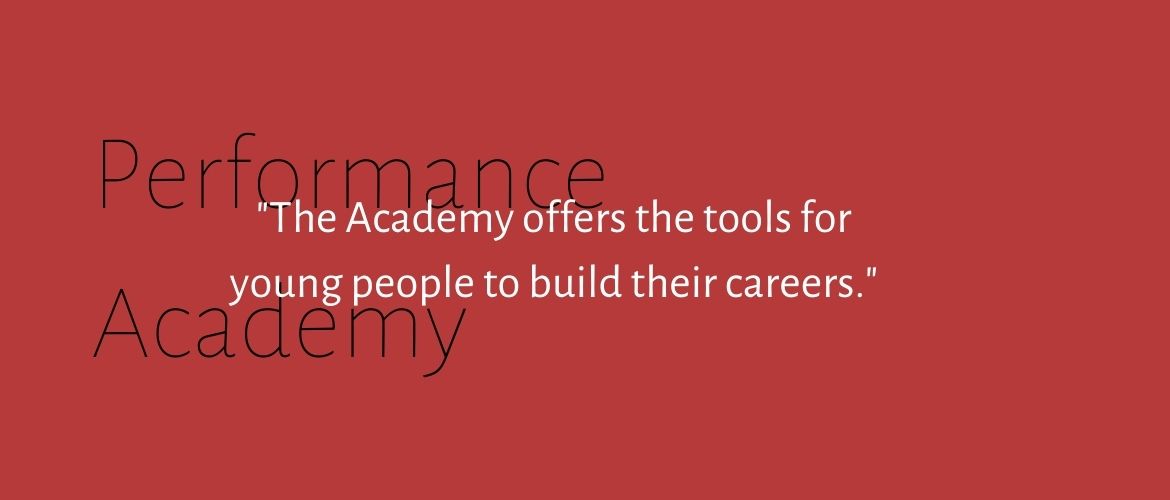Transformative Educational Leadership Journal | ISSUE: Spring 2019
Academies disrupt the way we assess, the way we grade, the way we teach, who teaches, who’s in the class, where we have class, and even the school schedule itself is susceptible to disruption. Academies are systems changing programs.
By Paige Hansen
Innovation floats on a sea of inquiry” (Timperley, Kaser, Halbert, 2014).
The fishermen know that the sea is dangerous and the storm terrible, but they have never found these dangers sufficient reason for remaining ashore (Vincent van Gogh, 1882).
Over a decade ago when given the opportunity to create a Film Acting Academy in the Delta School District, I was compelled by the idea but equally conflicted. Compelled because I knew instinctively that Academies are spaces of deep learning but conflicted because there is a price tag attached to them – a cost passed directly to the student. The British Columbian School Act describes Academies (section 82.1) as “an educational program that emphasizes a particular sport, activity or subject area and meets the prescribed criteria set out in the regulations [and goes on to specify that a] board may charge a student enrolled in a specialty academy fees relating to the direct costs incurred by the board.” In the end, my impulse to do education differently with different tools won out over my fear of creating a two-tiered education system. I did so however, with a promise to myself to challenge and change this barrier.
Academies disrupt the way we assess, the way we grade, the way we teach, who teaches, who’s in the class, and where we have class; even the school schedule itself is susceptible to disruption. Academies are systems changing programs.
Timperley, Kaser, and Halbert argue that “education systems designed in the last century no longer meet the needs of our learners or our societies… Schools must be transformed to engage today’s young people” (2014, p.4). Because of how we connect each Academy to professional communities and industry, I am struck by how deeply Academies actually do engage students.
Academies allow students to engage in such a way that they understand what a profession is really all about, before spending thousands of dollars and time in post secondary to “try it out”. They also, and more importantly, allow students to be ready for post-secondary education – not just able to be accepted into the program (Conley, 2017). In their paper, The Why, What, Where, and How of Deeper Learning in American Secondary Schools, Jal Mehta & Sarah Fine write that “deeper learning often emerges at the intersection of mastery, identity and creativity”(2015, p. 4). I have witnessed this type of deep, life affecting learning within Delta’s Academies.
Click on the image below to hear Kama Sood, one of our Film Production Academy alumni and now filmmaker, discuss the effect the program has had on his life.
Merging the Professional World & Schools to Help Students Engage in 21stc. Demands
The rapid development of digital technology and the globalized nature of economic systems are creating an entirely new set of educational challenges for the world to adapt to. The workers of the future will need to master a suite of adaptable interpersonal, problem-solving and critical-thinking skills, and navigate an increasingly digital and automated world (Worldwide Educating for the Future Index, The Economist, Intelligence Unit, 2017).
Education was designed in the last century to meet the needs of the industrial age – not the Information and Innovation Age. And by in large we are struggling to meet these needs and engage our current students with relevant curriculum. When we look at the report on Student Outcomes and School Climate by OurSCHOOL surveys we see that in 2018, 69% of 15-year-old girls and boys in Canada were not interested or motivated in their learning. “If we want significant changes in practice, we need to change the system” (Watkins, Peterson & Mehta, 2018, p. 8). Joining forces with the professional world is one way that Academies are melding the vibrancy of education with the real world application of skills and creative 21st c. thinking (Worldwide Educating for the Future Index, The Economist, Intelligence Unit, 2017). Branching further into the arts, Delta’s Academies recently created a partnership with Vancouver Opera (VO) to form The Performance Academy with the Vancouver Opera. This addition is one such example of how Academies are changing the system with adaptable interpersonal, problem solving and critical-thinking skills.
Click on the news release below to see a video of Colleen Maybin, VO’s Director of Education and Community Engagement and I discussing the merging of these worlds.
Academy classrooms’ Innovative Learning Environments are, innovative spaces that represent a change in an outdated system. They epitomize learning that will make ready our students for the information age as they centre around: mastery, identity, and creativity. They thrive in the arena of apprenticeship, learning by doing, and through collaborative projects (Watkins, Peterson & Mehta, 2018). Most particularly Fine Arts Academies students learn skills, as identified by The Economist’s Intelligence Unit’s Index (2017) that are crucial to flourish in this new age: interdisciplinary skills, creative and analytical skills, entrepreneurial skills,leadership skills, digital and technical skills, and finally, global awareness and civic education.
Academies exceed at marrying skills and content.
For all of the good that lives in Academies they also make some people philosophically very uncomfortable as we see “a division between progressives and traditionalists” (Hallgarten, Hannon, & Beresford. 2016, p. 8). Furthermore, as mentioned above, Academies cost considerable money to run and this cost is passed directly on to the students. Costs are incurred through the following avenues: transportation, instructors, field trips, cutting edge equipment, supplies and all other costs incurred in running a small business including advertising and office support, among other things. Therefore, Academies are not equitable as not all students have the financial means to participate. This dynamic inevitably creates a two-tiered education system.
In my current role, as Vice Principal of Academies, I have been bumping up against this point for the past five years. I have tried fundraisers, applying for grants, and begging stakeholders for financial aid all in an effort to offer greater equity amongst our students.
What Next?
Academies should not further cement inequities in our districts – they should be agents of change and equitable access. In “the absence of a systemic approach to equity… new learning opportunities unequally distributed… actually reinforce inequity” (Watkins, Peterson, Mehta, 2018, p. 9). So while I focus on making the academy structure more equitable, the bigger question is this: how could we change the system? How could we take the best Academies have to offer and infuse our mainstream classrooms’ Innovative Learning Environments with this strong learning model? What would that look like?
I’m also trying to figure out my role (greater obligation) in these programs, and in some ways, in the province… and really to be part of the “butterfly effect” in the world. That sounds a bit lofty (a tad dramatic, says the former Drama teacher!); but, if there is one golden thread running through British Columbia’s Education System and observed when looking at education through a global lens, it’s that technology has changed our world and we have a moral imperative to change how we educate students to both interact and thrive with this technology. This quest has economic, environmental and social emotional implications.
Creating something new in response to a perceived need can create waves, brewing the proverbial storm by disrupting established ways of being. Let’s remember that the “fishermen know that the sea is dangerous and the storm terrible, but they have never found these dangers sufficient reason for remaining ashore” (Vincent van Gogh, 1882).
References
- Conley, D. (2017) Towards Systems of Assessments for Deeper Learning. Chapter 9. Pg. 195-219 in Rethinking Readiness, Deeper Learning for College, Work and Life. Heller, R., Wolfe, R. & Steinberg, A (Eds) Harvard Education Press: Cambridge, MA.
- Halbert, J., & Kaser, L., (2016) System transformation and quality: Purpose, passion and persistence.
- Hallgarten, J., Hannon, V., & Beresford, T. (2016). Creative Public Leadership: How System Leaders Can Create the Conditions for System-wide Innovation. Qatar: World Innovation Summit for Education.
- OurSchool (Ed.). (2018). Report on Student Outcomes and School Climate (p. 1, Rep. No. 6049). The Learning Bar. Retrieved May 8, 2019, from https://ourschool.net/searchViewReportShop.htm.¹
- The Economist Worldwide Educating for the Future Index: A benchmark for the skills of tomorrow. 2017.
Mehta, J & Fine, S. (2015) The Why, What, Where, and How of Deeper Learning in American Secondary Schools. - Timperley, H., Kaser L., Halbert, J. (2014). A framework for transforming learning in schools: Innovation and Spiral of Inquiry.
- Van Gogh, V., Mr. (1882, May 16). A Letter written by Vincent van Gogh to his brother Theo van Gogh [Letter to Theo van Gogh]. Netherlands, The Hague.
- Watkins, J., Peterson, A., & Mehta, J. (October 2018) The Deeper Learning Dozen Transforming School Districts to Support Deeper Learning for All: A Hypothesis. Harvard: Unpublished Paper.
¹ Please note: This version of the OurSCHOOL student survey measures 35 indicators based on the most recent research on school and classroom effectiveness. This report provides highlights based on data from 1,446 students in 2 schools that participated in the survey between 21 Feb. 2019 and 11 Apr. 2019. The results for the district are based on last year's results for all students using The Learning Bar Survey for grade levels assessed by this district, and are compared with Canadian norms. For details on the survey see www.thelearningbar.com.




